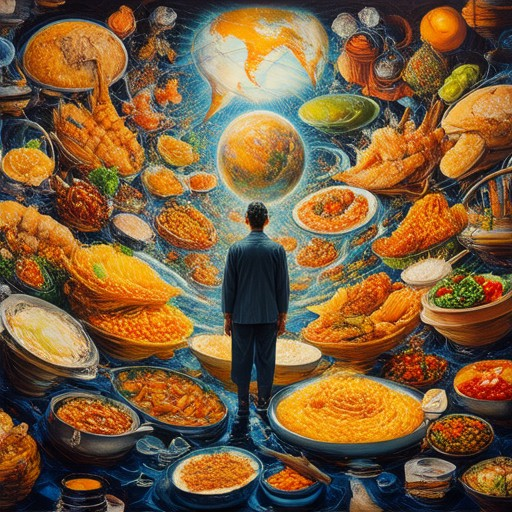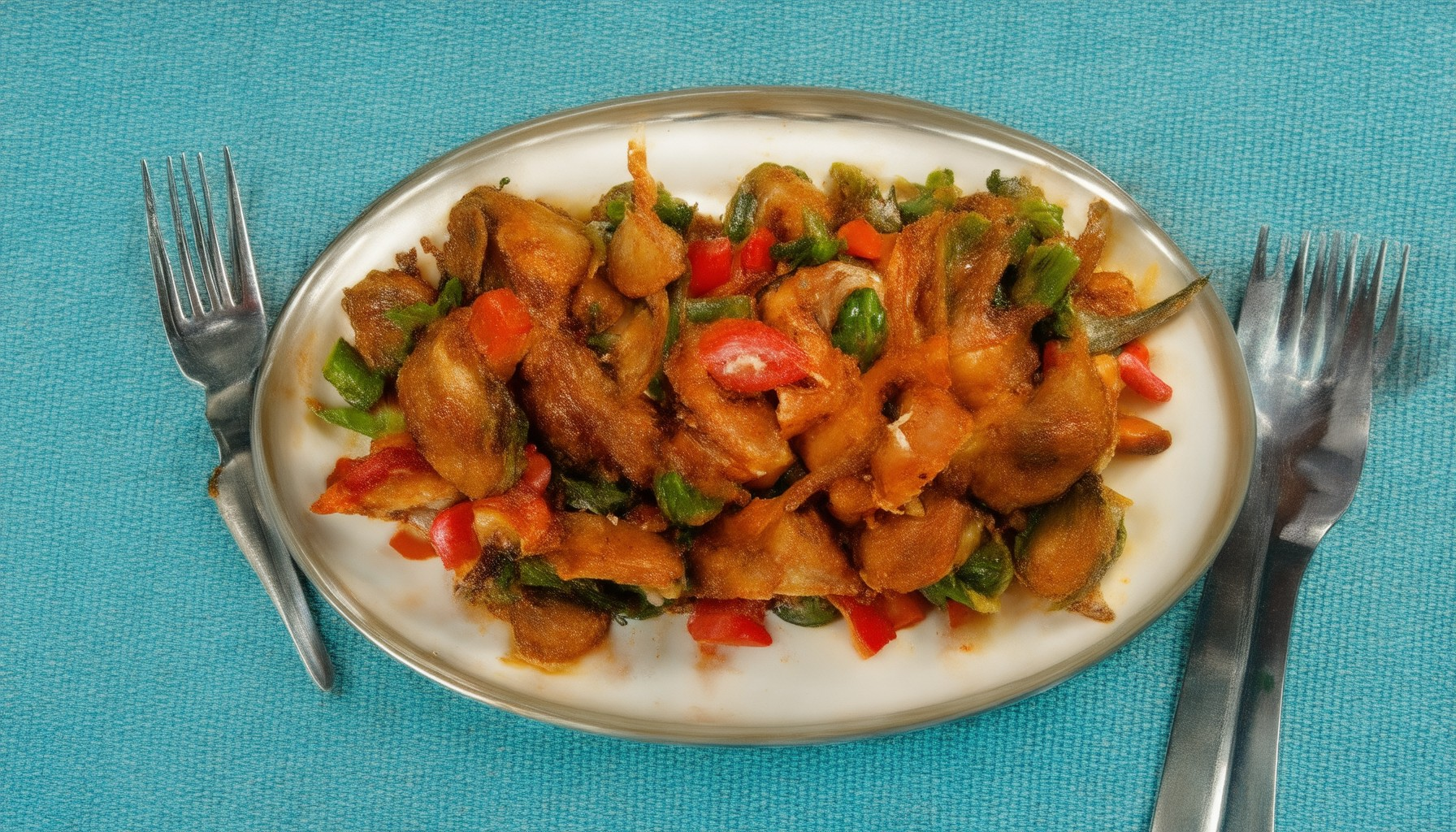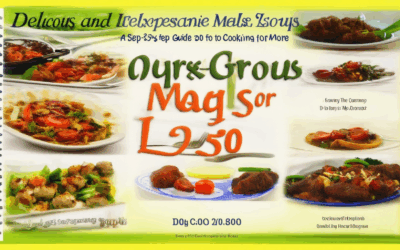Fusion cuisine, the artful blending of different culinary traditions, has redefined the way we experience food globally. By merging flavors, techniques, and cultural influences, fusion cuisine transcends borders and offers a fresh perspective on cooking. This innovative approach allows chefs to reimagine traditional dishes, creating bold and unexpected taste experiences that captivate food enthusiasts worldwide. From Asian-fusion dishes to Latin-Asian fusion, the possibilities are endless, making fusion cuisine a testament to human creativity and culinary evolution. Whether you’re a seasoned foodie or curious about the latest culinary trends, fusion cuisine offers a unique lens through which to explore the world of gastronomy. In this article, we’ll dive into the origins, examples, and significance of fusion cuisine, answering questions like what fusion food is, how it differs from traditional cuisines, and why it continues to thrive in the modern culinary landscape.
Key Takeaways
- What Fusion Cuisine Is: Fusion cuisine is the innovative practice of blending diverse culinary styles, techniques, and ingredients to create unique, flavorful dishes.
- Forms of Fusion: It manifests in various ways, including cultural fusion, regional fusion, molecular gastronomy, technological integration, and globalization.
- Beyond the Plate: Fusion extends beyond food, embracing sensory experiences like presentation, service, and ambiance.
- Characteristics: It thrives on cultural blend, experimentation, and innovation, pushing culinary boundaries.
- Examples & Success: Successful fusion styles include Nikkei cuisine and Thailand’s evolution from street food to fine dining.
- Why It’s Popular: Fusion’s creativity and global influence make it a favorite among food enthusiasts and chefs alike.

What is an example of fusion food?
Fusion food combines elements from different cuisines to create unique dishes that blend flavors, textures, and ingredients from various cultures. One notable example is:
- Banh Mi Fried Rice – A dish that merges Vietnamese and Korean influences, featuring rice, grilled pork, pickled vegetables, and spicy mayo.
- Kimchi Fried Rice – Combines Korean kimchi with Chinese-style fried rice, often topped with eggs and vegetables for a flavorful twist.
What is American Fusion Cuisine?
Fusion cuisine is a culinary approach that blends distinct cooking styles and ingredients from various cultures to create unique and innovative dishes. In the context of American fusion cuisine, this concept takes traditional American foods and infuses them with flavors, techniques, and ingredients from other global cuisines.
Origins and Evolution
American fusion cuisine emerged as chefs began experimenting with international flavors, bringing elements from Asian, European, Latin, and Mediterranean cuisines into traditional American dishes. This movement gained prominence in the late 20th century, thanks to chefs like Wolfgang Puck, whose modern American cuisine incorporated Japanese, French, and Italian influences.
Key Components
American fusion cuisine is characterized by its ability to merge global ingredients with classic American fare. Chefs often draw inspiration from various cuisines, resulting in dishes that are both familiar and surprising. Common influences include:
- Global spices and herbs
- Techniques from different cooking traditions
- Innovative ingredient combinations
Examples of American Fusion Dishes
The following dishes exemplify the essence of American fusion cuisine:
- Sushi Tacos: A combination of Mexican tortillas, Japanese sushi rice, and toppings like avocado and spicy mayo.
- Korean BBQ Sloppy Joe: A twist on the classic American sandwich, featuring Korean-style BBQ sauce and bulgogi beef.
- Indian-Spiced Fried Chicken: Crispy chicken coated in a curry powder and spice blend, served with traditional sides like naan and mango chutney.
- Mediterranean-inspired Burgers: Patties seasoned with za’atar, topped with feta cheese, olives, and hummus.
Chefs and Restaurants
Prominent figures in the evolution of American fusion cuisine include:
- Wolfgang Puck, known for his innovative take on American cuisine at restaurants like Spago.
- Thomas Keller, whose Per Se restaurant showcases a refined version of fusion cuisine.
- Bobby Flay, who successfully integrates global flavors into his signature dishes.
The Future of Fusion Cuisine
As culinary trends continue to evolve, American fusion cuisine remains a dynamic and creative field. Chefs are constantly exploring new cultural boundaries, leading to increasingly sophisticated and diverse dishes. This approach not only challenges traditional notions of American cuisine but also opens up new possibilities for global food enthusiasts.
Explore more culinary insights on our website .

What is a Fusion Foodie?
A fusion foodie is an individual who embraces the concept of fusion food, which involves blending and combining ingredients, flavors, and culinary traditions from different countries and cultures to create unique and innovative dishes. Fusion foodies are often characterized by their curiosity, adventurousness, and passion for exploring new and exciting tastes.
Characteristics of a Fusion Foodie
- Curious and Open-Minded : Fusion foodies are always eager to try new things and explore different cuisines. They enjoy discovering how flavors from various cultures can complement each other.
- Adventurous with Ingredients : These individuals are not afraid to experiment with unconventional ingredient pairings. They love the challenge of mixing sweet, savory, spicy, and tangy elements in a dish.
- Passionate About Global Flavors : Fusion foodies have a deep appreciation for international cuisines and enjoy learning about the history and traditions behind different foods.
- Creative in the Kitchen : They are often drawn to cooking methods that allow them to express their creativity, such as blending sauces, combining textures, or inventing new recipes.
Examples of Fusion Foods
Fusion foodies might enjoy dishes like: – Thai-inspired sushi rolls with sweet and spicy elements. – Mexican street corn tacos with Korean BBQ sauce. – Italian pasta paired with Southeast Asian spices.
Chefs like David Chang and Massaman have become famous for their ability to merge flavors from diverse backgrounds, creating dishes that are both familiar and surprising.
If you’re a fusion foodie, you probably already know that the journey of food is as important as the destination. Every bite tells a story, and every dish is an opportunity to explore the world through taste.

What Does Fusion Mean with Food?
Fusion refers to the creative process of combining different culinary styles, techniques, or ingredients to develop unique and innovative dishes. This concept extends beyond mere ingredient mixing, encompassing cultural influences, technological advancements, and the overall dining experience.
Forms of Fusion:
- Cultural Fusion : A broader perspective, fusion reflects the interaction and influence of diverse cultures, leading to hybrid foods and customs. This is evident in globalized cuisines, such as American fast food’s impact on international menus.
- Regional Fusion : Involves blending dishes from different regions of the same country. For instance, merging Northern Italian and Southern Italian elements can create novel and exciting dishes.
- Molecular Gastronomy : An advanced technique where chefs manipulate food at a molecular level to achieve unique textures and flavors, exemplified by chefs like Ferran Adrià.
- Technological Integration : Modern fusion cuisine often utilizes cutting-edge technology, such as 3D food printing and high-speed photography, to create visually stunning and intricate dishes.
- Globalization Influence : Fusion food mirrors globalization, with trade and migration bringing diverse cuisines to new audiences, as seen in vibrant food scenes like those in New York or London.
Experience Beyond Food:
Fusion transcends the plate, involving the sensory experience—presentation, service, and ambiance—that elevate a meal into a holistic, multi-sensory event. This comprehensive approach underscores the innovation and creativity driving fusion cuisine.
Fusion Cuisine Explained
Fusion cuisine is a culinary approach that combines flavors, ingredients, and techniques from different cuisines to create unique and innovative dishes. It represents a departure from traditional cooking methods, which often remain rooted in regional heritage and cultural traditions.
Key Characteristics of Fusion Cuisine
- Cultural Blend: Fusion cuisine merges elements from diverse culinary traditions, such as Japanese and Peruvian influences, resulting in styles like Nikkei cuisine.
- Experimentation: Chefs are not confined by traditional boundaries, allowing for creative combinations of textures, flavors, and presentation techniques.
- Innovation: Fusion chefs frequently use unexpected ingredients and unconventional preparation methods to craft novel dishes.
Difference from Traditional Cuisine
- Cultural Context: While traditional cuisine reflects a region’s history and culture, fusion cuisine transcends these limitations, creating dishes that challenge conventional notions of compatibility between foods.
- Global Influence: Fusion cuisine has had a significant impact on the global dining scene, redefining fine dining experiences and influencing how people perceive food.
Impact on Dining Experiences
Fusion cuisine offers diners the thrill of discovering new tastes and the surprise of unexpected flavor combinations. It challenges traditional culinary norms and fosters a more adventurous approach to dining, breaking down cultural barriers through shared sensory experiences.
Examples of Fusion Success
Thailand’s street food-inspired fine dining movement exemplifies fusion cuisine’s potential, showcasing how everyday foods can evolve into sophisticated dishes through innovative techniques.
Why Fusion Cuisine is Popular
Fusion cuisine appeals to food enthusiasts seeking novelty and adventure. Its creative process and diverse offerings make it a dynamic force in the culinary world, continually pushing boundaries and redefining expectations.

What is a fusion type of cuisine?
Fusion cuisine is a culinary approach that combines elements from diverse cultural traditions to create unique and innovative dishes. This type of cooking has gained popularity since the 1970s and continues to evolve in modern gastronomy.
Characterized by its blend of flavors, textures, and ingredients from different cuisines, fusion cuisine challenges traditional boundaries and offers a fresh perspective on cooking. It often incorporates unexpected combinations, such as pairing Japanese and Peruvian elements or American and Mexican influences.
- Historical Context: Fusion cuisine emerged in the 1970s, influenced by global trade and migration, which brought together different cultures and their foods. Chefs like Wolfgang Puck and Jean-Georges Vongerichten pioneered the concept, blending international flavors with local ingredients.
- Key Characteristics:
- Combination of multiple culinary traditions
- Focus on creativity and innovation
- Global-inspired dishes with a modern twist
- Examples of Fusion Styles:
- Asian fusion: Incorporating Japanese, Chinese, Thai, and Vietnamese elements
- Mexican fusion: Blending traditional Mexican flavors with those from the American South
- Nuevo Andino: Combining Peruvian and Japanese cuisines
Fusion cuisine has become a cornerstone of fine dining, offering diners a chance to experience global flavors in a single dish. It has inspired countless chefs and restaurants to push creative boundaries, resulting in a vibrant and dynamic culinary landscape.
Memories Restaurant celebrates this diversity by offering a menu that draws inspiration from around the world, creating a unique dining experience for every guest. Our commitment to innovation and flavor ensures that we remain at the forefront of culinary evolution.
Explore Chef Wolfgang Puck’s fusion cuisine
Discover the innovative dishes at Per Se





0 Comments